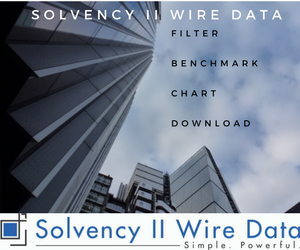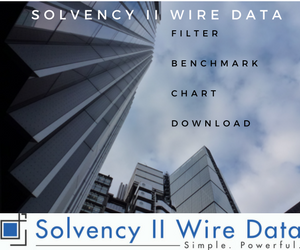The IPD Solvency II Review: Informing a new regulatory framework for real estate, suggests that a 15% charge would be more appropriate. The report, which was funded by a consortium of seven trade bodies, aims to “help promote a prudential, risk aware and well informed approach to asset allocation”. The charge and the future of property investment under Solvency II were discussed in webcast hosted by IP Real Estate.

Real estate investment misunderstood
A broad criticism of the regulation as it stands is that the application of a uniform charge to all real estate investment suggests a lack of depth of understanding of real estate investment. Matthew Ryall, Head of Indirect Investment and Capital Markets at Allianz Real Estate said the latest quantitative impact study (QIS 5) results were telling of this lack of engagement. “When QIS 5 came out I think most people from the property industry got a shock by some of the assumptions that were in it. Namely, how risky property was and also the correlation between property and other assets. In both cases they looked very high and certainly from the data that we have been using for many years was quite surprising.” According to Will Anderson, Finance Director, property, Henderson Global Investor, “As the current legislation stands there is no differentiation in the market across different sectors of real estate and indeed different countries.” This lack of differentiation echoes the treatment of other asset classes under Solvency II, John Forbes, partner, real estate funds, PwC, said: “I don’t think that real estate has been particularly treated differently in having a blunt and unsophisticated market shock applied. The idea that there is no difference between German sovereign debt and Greek sovereign debt is similarly rather a blunt instrument … the whole approach is to sacrifice even a vague semblance of detail in the interest of simplicity.” The IPD report is calling for the use of more detailed information and indices on which to base the market shock charge for property investment.Look-through
 Even if more subtlety is applied to the treatment of real estate, a further concern is the issue of look-through; that is whether the calculation of the market shock should apply to the investment instrument in the portfolio or the underlying assets.
“The fundamental question is whether you treat [real estate investments] as equity and apply the equity shock to the net value of the investment or look-through and apply the shock value to the gross value of the underlying investment and deduct the debt,” said Mr Forbes. “Once that’s resolved there will be lots of things that you can do to make particular products more or less attractive.”
Even if more subtlety is applied to the treatment of real estate, a further concern is the issue of look-through; that is whether the calculation of the market shock should apply to the investment instrument in the portfolio or the underlying assets.
“The fundamental question is whether you treat [real estate investments] as equity and apply the equity shock to the net value of the investment or look-through and apply the shock value to the gross value of the underlying investment and deduct the debt,” said Mr Forbes. “Once that’s resolved there will be lots of things that you can do to make particular products more or less attractive.”
Effects of Solvency II on real estate investing
The final treatment of the look-through and the capital charge will have significant impact on the investment portfolio. Understandably both insurers and investment firms are tracking this closely. Although a survey conducted during the webcast showed that 72% of respondents plan to continue investing as normal despite uncertainty, members of the panel agreed that at least some investment behaviour is likely to change. Property investment could shift away from direct investment in equity to debt instruments. Another possibility is that investors may take on riskier assets with higher returns to compensate for the high charge. However all members of the panel reiterated that it is difficult to estimate the effects of Solvency II on investment until these uncertainties are clarified.Working with the regulator
The QIS 5 report published in March notes that property risk “did not attract widespread comment”. The report also states: “In some countries participants fed back that the property risk module was insufficiently granular, suggesting that location of property and type of use be taken into account. However in most of those cases their supervisors stated that they were reluctant to introduce further complexity to the standard formula by increasing the granularity of the module. In addition, in three countries there was feedback that the module was overly severe for the local market. Finally, it was suggested by one supervisor that the calibration was inappropriate for assets backing long-term liabilities.” There was a broad consensus in the panel that the industry must engage with regulators to ensure the final draft is both fair to the industry and achieves its regulatory objectives.
“This kind of regulation is a fact of life,” said Mr Anderson, “we need to engage with it in a serious manner and ensure that we inform the legislators at a properly detailed level so that the legislation that is put in place is appropriate and properly thought through.”]]>
There was a broad consensus in the panel that the industry must engage with regulators to ensure the final draft is both fair to the industry and achieves its regulatory objectives.
“This kind of regulation is a fact of life,” said Mr Anderson, “we need to engage with it in a serious manner and ensure that we inform the legislators at a properly detailed level so that the legislation that is put in place is appropriate and properly thought through.”]]>





